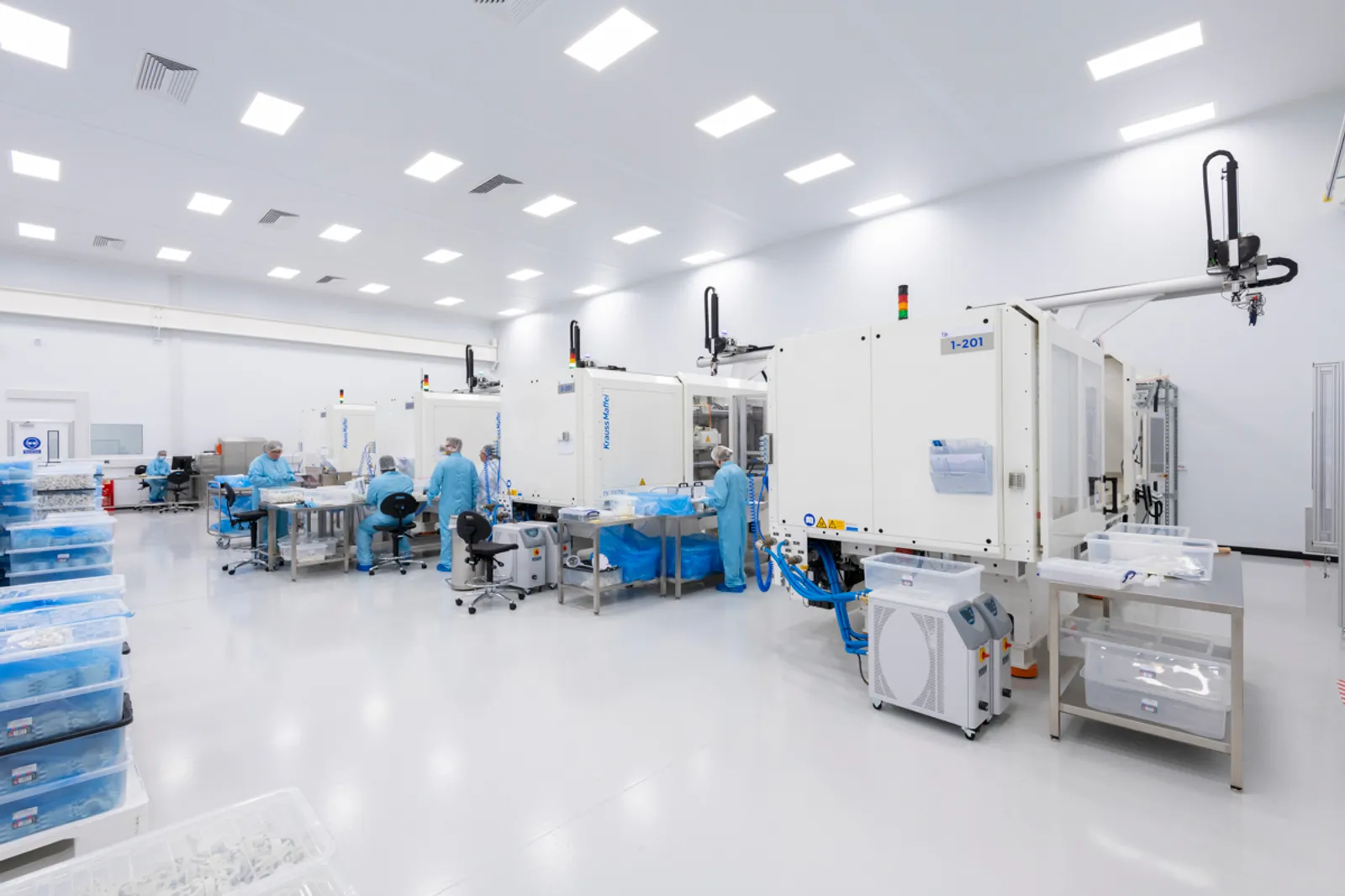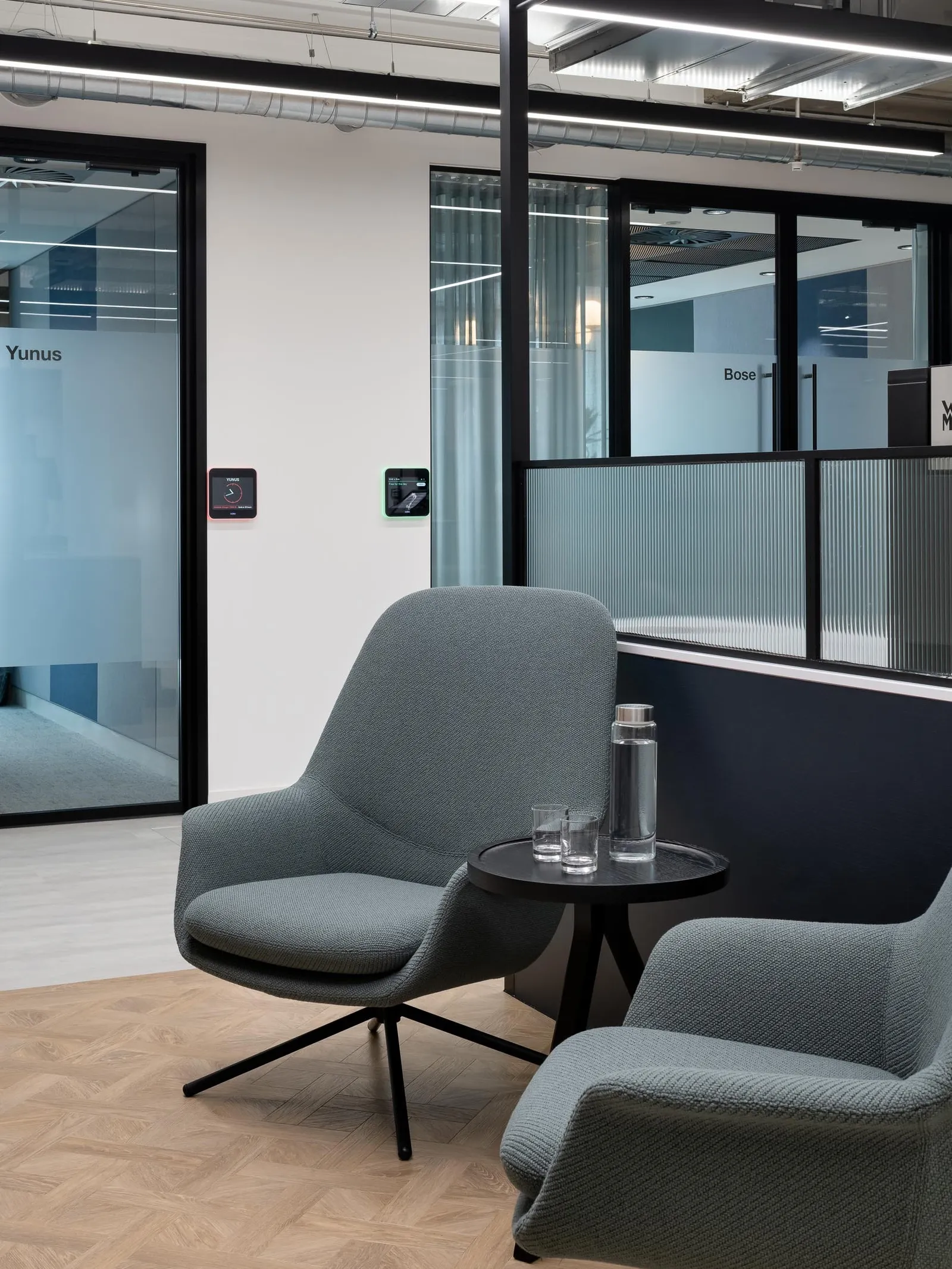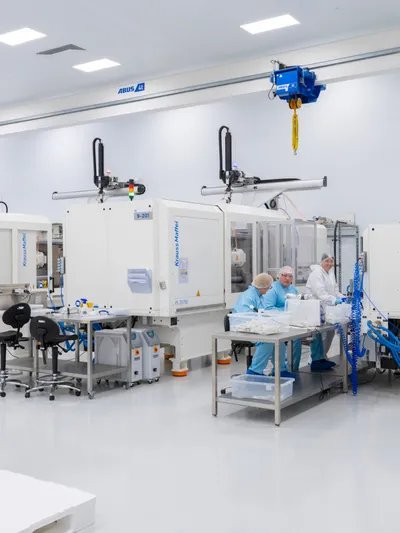In the pharmaceutical and biotechnology sectors, the term CMO lab refers to a facility run by a Contract Manufacturing Organisation, often associated with a GMP lab or Good Manufacturing Practice.
These organisations take on the responsibility of producing medicines, biologics, and other health-related products on behalf of client companies.
While the science of drug discovery is often conducted within research laboratories, scaling production to a commercial level requires a different type of environment, one built to the highest manufacturing standards, tightly regulated, and designed with efficiency and compliance at its core.
For many emerging biotechs, or even established pharmaceutical firms, it is neither feasible nor cost-effective to construct such facilities in-house.
This is where the CMO lab comes into play: a dedicated space that enables organisations to bring therapies to market without the need for substantial capital investment in their own infrastructure.
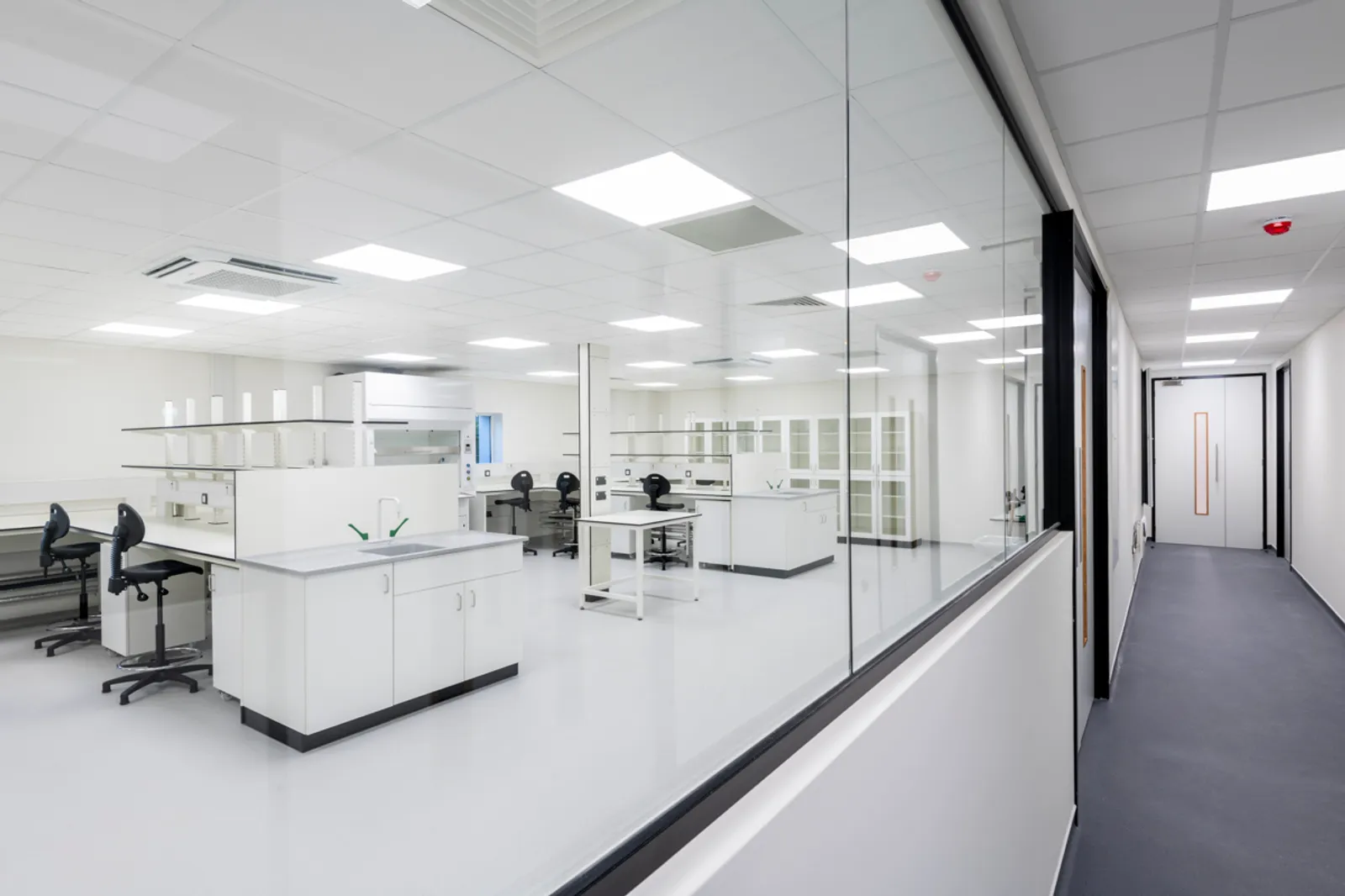
What is the role of a CMO Lab?
A CMO lab does far more than simply manufacture products at scale. It provides a controlled environment where processes can be repeated reliably, where materials flow seamlessly through each stage of production, and where the quality demanded by regulators such as the MHRA, EMA, or FDA is upheld.
For laboratory design specialists like ours, this means creating spaces that support technical complexity without compromising safety or efficiency.
Unlike a research laboratory, which often prioritises flexibility and collaboration, a CMO laboratory is geared towards precision, containment, and compliance.
Every aspect, from the cleanroom classification to the arrangement of equipment, the placement of pass-through hatches, or the specification of finishes, must support consistent output.
Why companies rely on CMO facilities
The demand for CMO laboratories has expanded rapidly in recent years, fuelled by the rising costs of in-house manufacturing and the increasingly complex requirements of new medicines.
For many pharmaceutical and biotech companies, outsourcing production provides access to expertise, validated systems, and regulatory assurance that would be difficult to establish independently. Yet the physical environment itself is integral to this value.
A well-designed facility allows Contract Manufacturing Organisations to demonstrate consistency, scale production efficiently, and instil confidence in both clients and regulators. While choosing the right site will help with this further.
The core reasons organisations turn to CMO labs include:
Reduced capital expenditure by removing the need to build and maintain their own facilities
Faster routes to market through streamlined access to manufacturing capacity
Specialist expertise in production processes, quality systems, and compliance frameworks
When these benefits are supported by a robust design, the facility becomes more than a site of manufacture; it is a strategic asset that underpins growth and innovation.
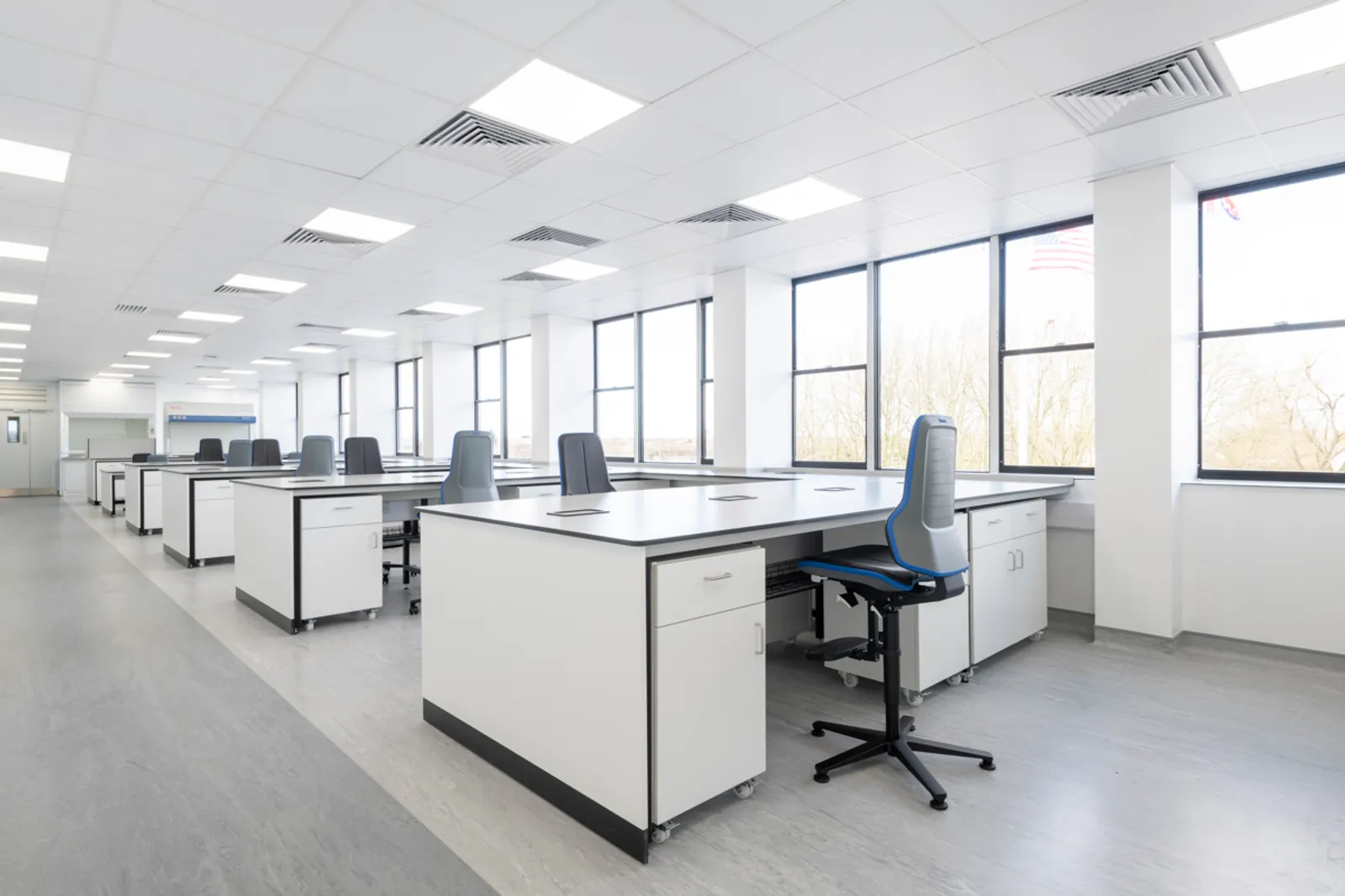
Design considerations unique to CMO labs
From a design perspective, CMO laboratories bring together some of the most stringent technical demands in the sector.
Unlike research spaces, which often prioritise collaboration and flexibility, manufacturing facilities must be geared towards repeatability, safety, and control.
This makes the design process highly detailed, with every decision influencing not just efficiency but also compliance and client trust.
Key considerations typically include:
Segregated circulation routes for people, raw materials, and waste, preventing cross-contamination
Specialist HVAC systems to maintain pressure differentials and cleanroom integrity
Durable, cleanable surfaces that withstand chemical exposure and rigorous sanitation regimes
Integrated monitoring systems that support continuous validation and regulatory reporting
Opportunities and Risks
Yet alongside the opportunities are a number of risks, many of which are directly tied to the quality of the facility itself:
Delays in regulatory approvals, if the inspection requirements are not adequately supported
Quality control failures, leading to wasted product and reputational damage
Inefficient layouts, reducing throughput and increasing operational costs
Financial consequences of downtime, should systems or processes fail to perform consistently
Mitigating these risks requires a future-proofed design, as well as a focus on safety.
Modular layouts, flexible cleanroom configurations, and the integration of digital monitoring can all help ensure that today’s investment continues to perform tomorrow, even as the regulatory landscape or production demands shift.
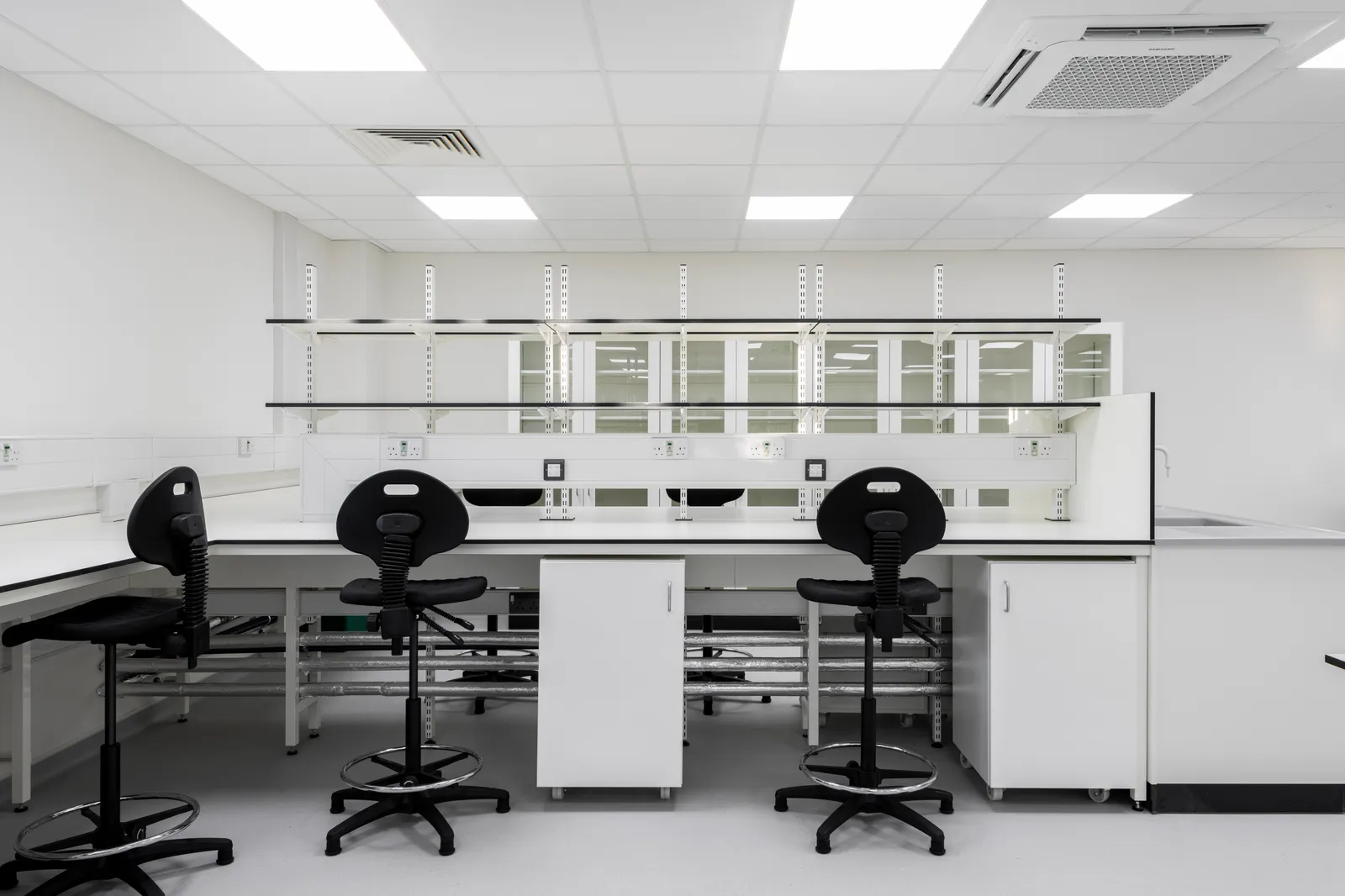
The future of CMO lab design
The trajectory of pharmaceutical outsourcing suggests that the line between CMOs and CDMOs, those that also provide development services, will continue to blur.
This shift will place even greater pressure on laboratory design. Facilities will need to balance the rigour of manufacturing with the adaptability of R&D spaces, supporting everything from early-stage process development to large-scale production.
Sustainability, too, will become a differentiator, with clients expecting not only compliance and efficiency but also energy-conscious solutions that reduce environmental impact.
In this context, CMO labs represent a fascinating intersection of science, engineering, and architecture: environments where design decisions directly influence human health outcomes on a global scale.
Closing thoughts
Understanding what a CMO lab is means recognising it as more than a manufacturing site. It is a highly engineered space where design, compliance, and process converge to enable the safe, efficient, and scalable production of medicines.
At Area Laboratories, we see our role as ensuring that these environments are not only functional but also resilient, sustainable, and capable of supporting the future of healthcare innovation.
By approaching each project with this perspective, we help organisations and their Contract Manufacturing partners deliver therapies that make a tangible difference to people’s lives.

CMO Labs FAQs
How is a CMO different from a CDMO?
While a CMO focuses primarily on manufacturing at scale, a CDMO, or Contract Development and Manufacturing Organisation, also offers development services such as formulation, process optimisation, and analytical testing.
The distinction is narrowing, with many CMOs now expanding their services into development, but the design of their facilities often reflects this difference: CDMOs may require more flexible, R&D-style spaces alongside traditional cleanrooms.
What does CMO actually stand for?
CMO stands for Contract Manufacturing Organisation. In the pharmaceutical and biotech sectors, it refers to a company that takes on the responsibility of producing medicines or biologics for clients.
A CMO lab is the facility in which this manufacturing takes place, designed specifically to meet regulatory requirements such as Good Manufacturing Practice (GMP).
What are the main risks associated with CMO labs?
The most common risks involve regulatory compliance, intellectual property protection, and dependency on external capacity.
If a facility is poorly designed, bottlenecks in circulation, contamination risks, or inadequate monitoring systems can undermine compliance and delay approvals. This is why design partners focus so heavily on material flows, HVAC zoning, and validation-ready infrastructure.
What makes the design of a CMO lab different from a research laboratory?
Research laboratories are often designed for flexibility, collaboration, and experimentation.
CMO labs, by contrast, must prioritise repeatability, containment, and compliance. This means more controlled circulation routes, higher cleanroom classifications, and robust HVAC systems to maintain pressure differentials.
The materials used, the way equipment is integrated, and even the door placements are dictated by regulatory needs.
How can design reduce the risks of non-compliance?
Many compliance issues stem from the physical layout of a lab. For example, poorly segregated routes for people and materials can increase contamination risks, while inadequate monitoring systems can lead to failed inspections.
By embedding GMP requirements into the architecture, from zoning plans to material choices, we create facilities that make compliance part of daily operation rather than a separate hurdle.
